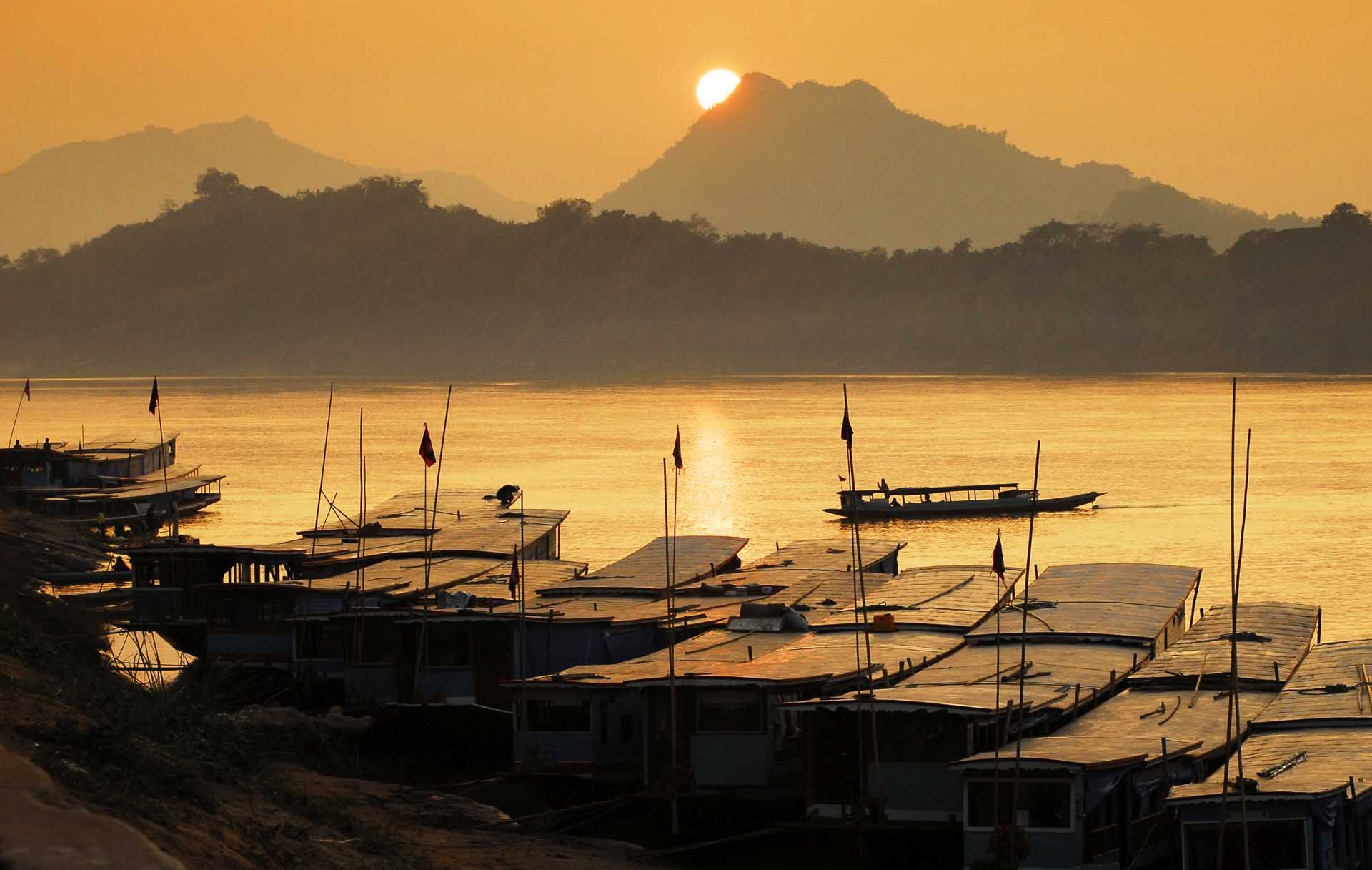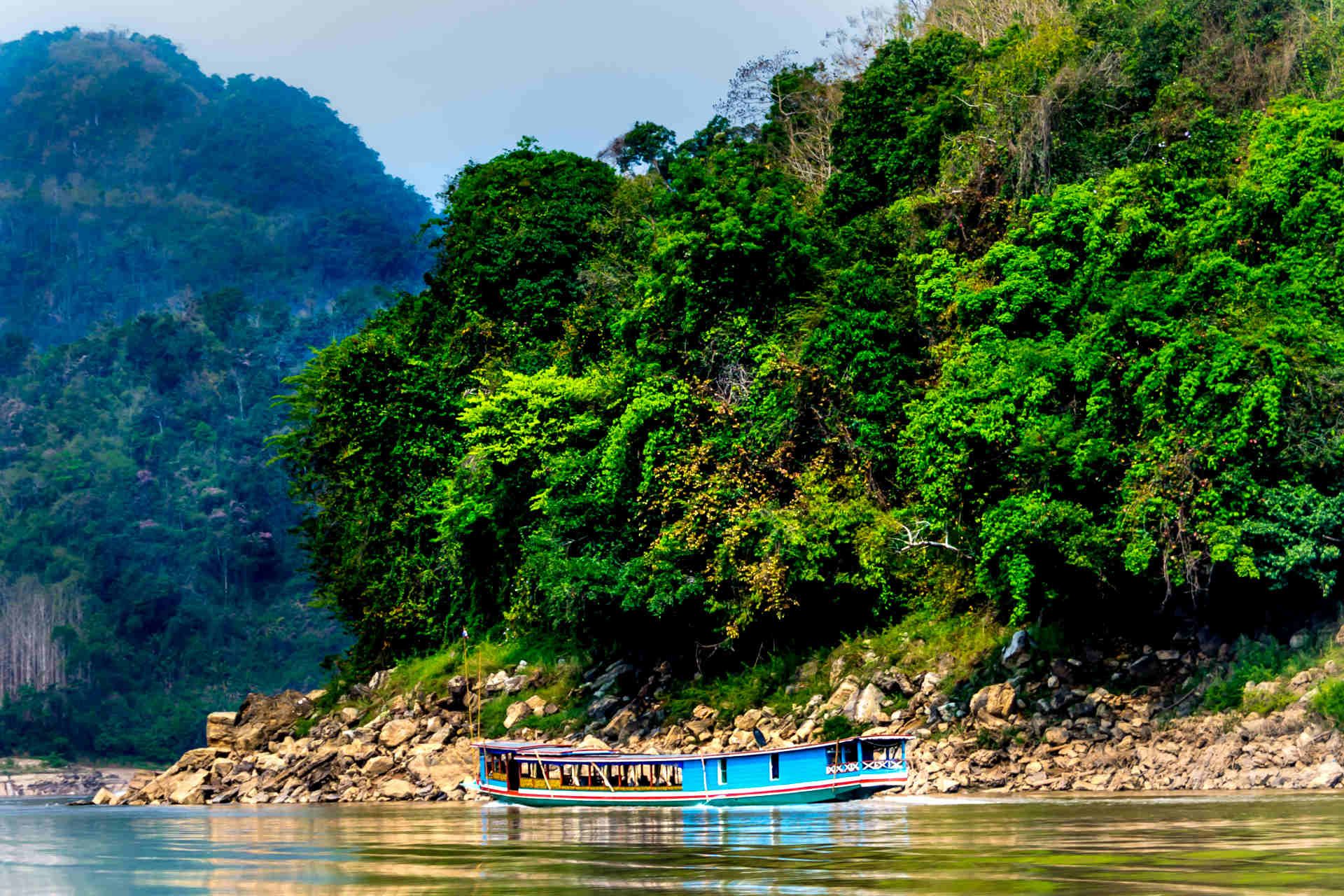4. Luang Prabang
The royal capital, Luang Prabang (Louangphabang), is one of the most intriguing, magical, and romantic cities in Asia. It is a treasure trove of fine old temples and boasts quiet streets lined with handsome colonial buildings
In the center of the city, between Mount Phu Si and the Mekong, is the Royal Palace Museum, which offers an insight into the history of the region. To the southwest of the Royal Palace is Wat Mai Suwannaphumaham. Dating from the early 19th century, this temple was once the residence of the Sangkhalat, the supreme patriarch of Buddhism in Laos. This is easily one of the best things to do in Luang Prabang.
How to get to Luang Prabang
You can fly straight into Luang Prabang from several cities like Bangkok, Singapore, or Hanoi. If you’d rather arrive slowly, the two-day Mekong boat ride from Huay Xai is a scenic choice.
There are also VIP overnight buses from Vientiane, which take around 8–10 hours. Roads have improved a lot recently, so travel times are shorter than they used to be. Once you’re in town, everything in the heritage district is walkable, which makes getting around easy.
When to visit Luang Prabang
November through February brings cooler, dry weather—around 68–77°F (20–25°C)—which is good for walking, visiting temples, and catching the morning almsgiving.
April is lively with Pi Mai, the Lao New Year, which fills the city with water fights and traditional rituals. Early mornings are always nice here, with mist hanging low over the river and monks walking silently through the streets. From March to May, though, burning season can make the air quite smoky, so it’s something to be aware of.





















